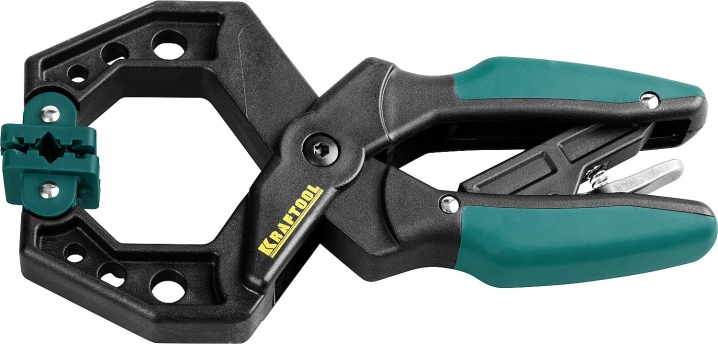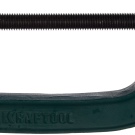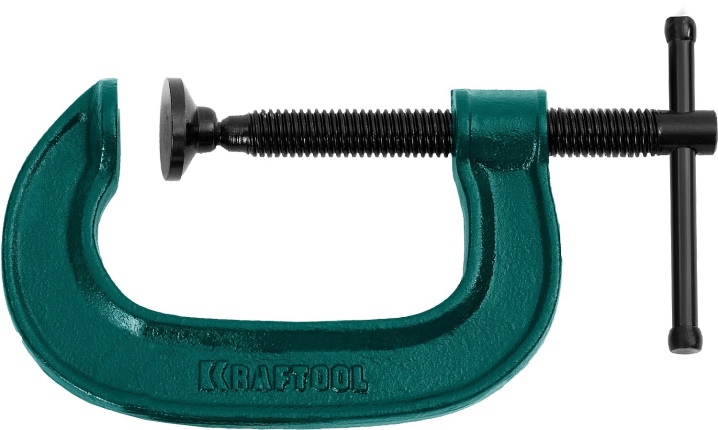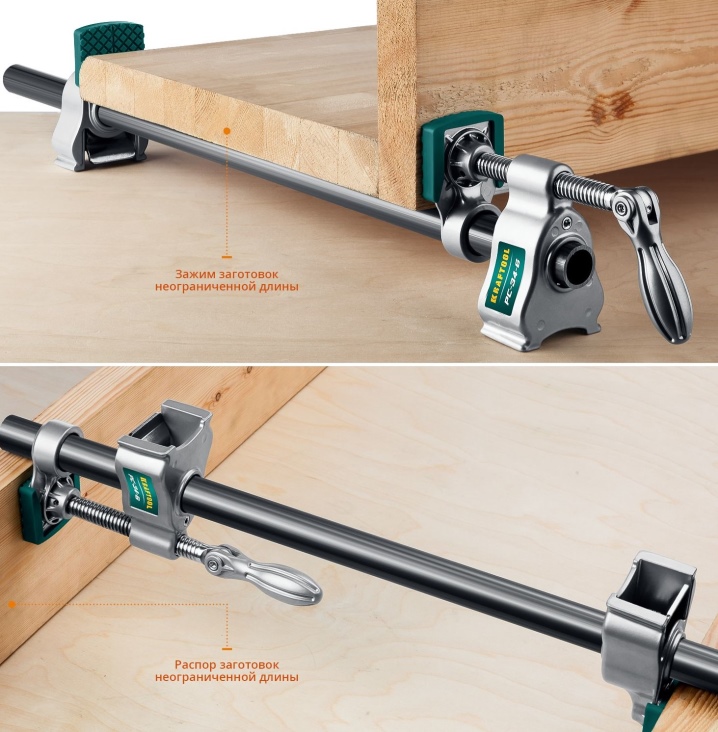All About Kraftool Clamps

The use of high-quality equipment, including clamps, not only facilitates the performance of plumbing work, but also increases their safety. Therefore, if you are going to replenish the assortment of your workshop, consider the main features and assortment of Kraftool clamps.

Peculiarities
The Kraftool company was founded in the German city of Lehningen in 2008 and is engaged in the development and production of carpentry, locksmith, construction and automotive tools, fasteners and accessories, including clamps.
The production facilities of the company are located in Asia - Japan, China and Taiwan.

The main differences between Kraftool clamps from analogs are as follows.
- High quality standards - all instruments produced by the company undergo rigorous testing in our own laboratories equipped with modern chemical, tribological and metallographic equipment. Therefore, the tools comply with ISO 9002 standards and have all the quality and safety certificates required for sale in Europe, the USA and the Russian Federation.
- Reliability - high-quality materials and modern technologies are used in the production, due to which the expected service life of the tools is noticeably higher than that of their Chinese counterparts.
- Acceptable price - due to the combination of production in China with German quality standards, the company's products are slightly more expensive than their counterparts made in China and Russia, and much cheaper than products made in the USA and Germany.
- The convenience of use - the designers of the German company, when developing clamps, pay great attention to their ergonomics.
- Affordable repair - a wide dealer network of the company in the Russian Federation allows you to quickly find the necessary spare parts.

Model overview
Currently, the Kraftool company offers about 40 types of clamps of various designs and sizes. Let's note the most popular of them.
- EXPERT - belongs to structural type F and has a compression force up to 1000 kgf (980 N). Available in several sizes - 12.5 × 100 cm, 12.5 × 80 cm, 12.5 × 60 cm, 12.5 × 40 cm, 10.5 × 100 cm, 10.5 × 80 cm, 10, 5 × 60 cm and 8 × 40 cm.
- EXPERT DIN 5117 - a modernized version of the previous model, featuring a two-piece handle. Supplied in the same dimensions.
- EXPERT 32229-200 - professional G-shaped version, made of high strength cast iron. The size of the clamped part is up to 20 cm.
- EXPERT 32229-150 - a variant of the previous model with a workpiece size up to 15 cm.
- EXPERT 32229-100 - version of model 32229-200 with a workpiece size up to 10 cm.
- EXPERT 32229-075 - version of model 32229-200 with a workpiece size up to 7.5 cm.
- INDUSTRIE - quick-clamping F-shaped lever-type clamp. Available sizes of the clamped part: 7.5 × 30 cm, 7.5 × 20 cm and 7.5 × 10 cm. Depending on the size, it has a clamping force from 1000 to 1700 kgf.
- INDUSTRIE 32016-105-600 - a version of the previous series with a sealed thread, designed for welding. Size - 10.5 × 60 cm, force 1000 kgf.
- GRIFF - F-shaped joinery with a movable stop and a trapezoidal thread of the spindle, which allows you to clamp the wood with a high force without damaging it. The size of the workpiece is up to 6 × 30 cm.
- EcoKraft - a series of lever-type hand-held pistol clamps in a plastic case with a force of 150 kgf. Depending on the model, the clamped part can be up to 80, 65, 50, 35, 15 and 10 cm in size.






How to choose?
When choosing a clamp for your workshop, you need to take into account its such characteristics.
Design
- F-shaped - this equipment consists of a fixed metal guide (which can be attached to the work table or be in the hands of the master) and a movable jaw sliding along it with a screw grip. Differs in lightness, and also has the widest range of adjustment of the distance between the jaws, so it can be used as a universal.

- G-shaped - is a metal C-shaped bracket with a screw clamp inserted into it.Allows to develop a higher clamping force than F-shaped models, therefore it is used mainly for working with relatively large workpieces. The main disadvantage is that the range of adjustment of the size of the clamped part is limited by the size of the staple, so you usually have to purchase a set of different-sized clamps.

- End - a version of the G-shaped tooling with an end screw clamp, used in the manufacture of furniture.

- Mounting - an upgraded version of the G-shaped clamp, used to work with particularly large parts.

- Self-clamping - version of the F-shaped clamp with an automatic clamping mechanism. The main advantages are speed and ease of use and the ability to work with one hand. The main disadvantage is the lower clamping force compared to manual models.

- Corner - the most highly specialized type of tooling used exclusively in the furniture industry to connect wooden blocks at a certain angle (usually 90 °).

Clamping force
The magnitude of the compressive force determines the force that occurs between the jaws of the clamp and the surface of the part when fully fixed. The higher this value, the more reliable the equipment will hold the part installed in it. Therefore, when choosing a clamp, it is worth considering the amount of force developed by the tool with which you are going to process the workpieces clamped in the tooling. It is desirable that the range of force adjustment be as wide as possible.
In this case, you should not chase the clamps with the maximum clamping force - it is important to take into account the strength characteristics of the material that you are going to clamp.

So, a tooling designed to work with metal will leave marks on the surface of the clamped tree.
We offer you to watch an overview of the Kraftool clamp in the video.













The comment was sent successfully.